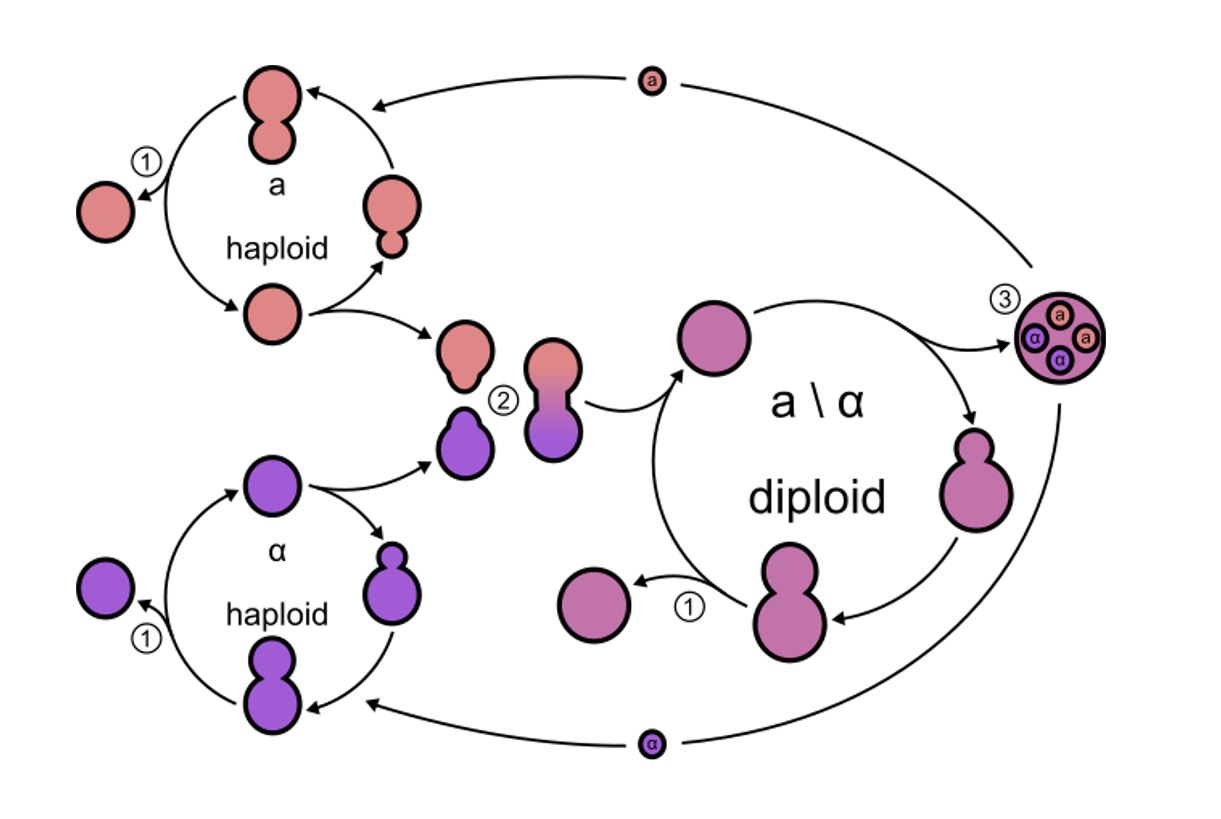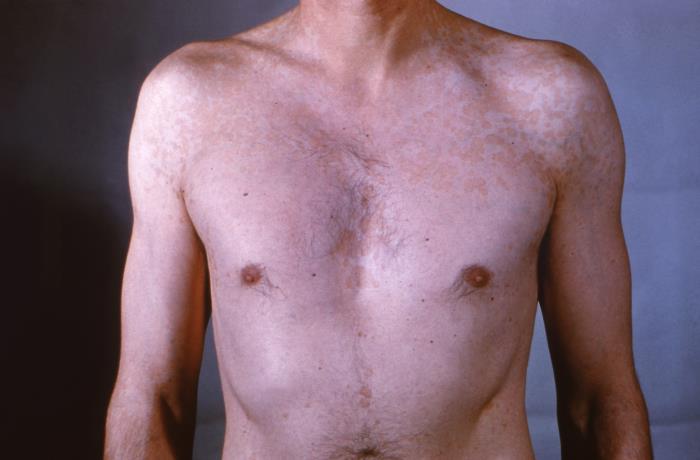Playlist
Show Playlist
Hide Playlist
Malassezia – Subcutaneous, Cutaneous and Superficial Mycoses
-
Slides 09 SubcutaneousCutaneous MicrobiologyAdvanced.pdf
-
Download Lecture Overview
00:00 And finally, let’s end up this interesting and intriguing discussion with Malassezia. 00:07 It's not pizza, it's a superficial infection. Most adults have colonization of the stratum corneum, the outer layers of the skin, with Malassezia, which is a yeast. It is a single cell growing organism, sort of like Saccharomyces cerevisiae, however Malassezia does not give you beer or bread, it just gives you troubles. Here on the left in this slide you can see a microscopic view of these yeasts from a tissue section, you can see the individual cells. And again they are in the very outer layers of the skin. Most of us are colonized with Malassezia and we don't even know it, but occasionally for reasons that are not yet clear, it causes various syndromes like Seborrheic dermatitis. This is a pruritic erythematous, meaning red, patch with greasy scales. It can happen in your eyebrows, if you have a mustache it could be there, or in your beard or it can happen on your scalp. 01:12 This is commonly known as dandruff, that's right dandruff is caused by a yeast, Malassezia. 01:21 So the next time you have dandruff and you wear a black shirt, you know, you can see the flakes on your shoulders, and we are in today’s society meant to believe that this is terrible and you should rush to the drugstore and buy a dandruff shampoo and that's what many people do, but it can also occur in your eyebrows, mustache, and beard. So that's one manifestation of Malassezia. The other is called Tinea versicolor. These are hypopigmented or hyperpigmented patches, either over colored or under colored with a little bit of scaling, which can be on your chest or your neck. Again it's from Malassezia, which is normally there, but something's gone wrong and it causes these conditions. 02:03 And again you can treat these. Dandruff as you know, seborrheic dermatitis, which is the medical name for dandruff, can be treated with shampoos, special shampoos that have antifungal agents in them. The tinea versicolor can be treated with creams that you put on the afflicted area. These are not life-threatening infections, but I thought you would like to know about them, because so many people have them. 02:31 And here are some of the antifungal agents that can be used to treat these conditions, let's zoom in to see how we treat Dermatophytosis, three different drugs are listed here: Terbinafine, Ketoconazole, Itraconazole, some of which are topical, some of which are oral, that's for dermatophytosis.
About the Lecture
The lecture Malassezia – Subcutaneous, Cutaneous and Superficial Mycoses by Vincent Racaniello, PhD is from the course Fungi.
Included Quiz Questions
Which of the following dermatophytic infections is matched correctly with its location?
- Tinea unguium: fingernails or toenails
- Tinea capitis: crotch
- Tinea pedis: head
- Tinea cruris: feet
- Tinea unguium: hands
Which of the following is NOT a typical place one can find and contract dermatophytic infections?
- In aerosolized particles in the air
- In the soil
- In animals
- On locker room floors
- On shower walls
How does a dermatophyte enter the body?
- Through a break in the skin
- From eating contaminated food
- Via the fecal–oral route
- Diffusing through pores on the skin
- Through contaminated drinking water
Which of the following is NOT caused by Malassezia?
- Athlete's foot
- Seborrheic dermatitis
- Pruritic erythematous patches in the eyebrows, mustache, or beard
- Tinea versicolor
- Dandruff
Which drug cannot be used to treat dermatophytosis?
- Itraconazole, topical
- Terbinafine, topical
- Ketoconazole, oral
- Itraconazole, IV
- Terbinafine, oral
Which layer of the skin does Malassezia usually colonize?
- Stratum corneum
- Stratum basale
- Stratum spinosum
- Stratum granulosum
- Stratum lucidum
Dandruff is usually caused by which organism?
- Malassezia
- Candida albicans
- Aspergillus
- Blastomyces
- Microsporum
Customer reviews
5,0 of 5 stars
| 5 Stars |
|
5 |
| 4 Stars |
|
0 |
| 3 Stars |
|
0 |
| 2 Stars |
|
0 |
| 1 Star |
|
0 |





